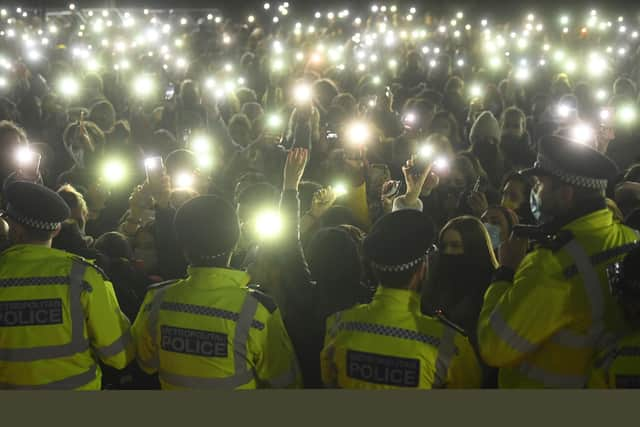As Sarah Everard's murder showed, downplaying indecent exposure can have deadly consequences – Karyn McCluskey
What happens when you read the words ‘indecent exposure’? For women (and some men), images will spring unbidden into their minds of a time they’ve been ‘flashed’ or sent unsolicited pictures. An innocuous, even flippant, word, ‘flashed’ doesn’t convey the fear, shock, and flight, fight or freeze reaction that accompanies the event.
I’ve been having conversations with my female friends recently and it’s been a sobering experience. We’d all experienced it, usually as teenagers in school uniform, being confronted by an adult male with an erect penis. Our memories are undimmed.
Advertisement
Hide AdAdvertisement
Hide AdIt holds huge power for many of the men who do it. They enjoy the fear, and victims are often chosen to enhance that feeling of power; someone caught unawares or where they can’t escape the sight. Wayne Couzens, the police officer who murdered Sarah Everard, had a history of sexual crimes, including indecent exposure.


Treated as a joke
Women don’t often go to the police. Of the conversations I had, only one friend reported it. I didn’t, partly because of embarrassment, shock and youth. Why is it often dismissed as more of a nuisance than a sexual offence? Partly because of the origins in law (the Vagrancy Act 1824) but language matters too.
‘Flashing’ sounds fleeting, but for the victim, it is anything but. Culturally, men in macs exposing themselves has been a staple of ancient sitcoms, reduced to something comical. I’m glad that’s consigned to history.
Exhibitionism disorder is a common ‘paraphilia’ – persistent and recurrent sexual interests, urges, fantasies, or behaviours of marked intensity. Around 30 per cent of male sex offenders are exhibitionists and many have other paraphilias. It is under-researched and under-reported.
This should worry us. A 2014 evidence review found that between five and ten per cent of men who commit this offence go on to commit other serious sexual assaults. The biggest risk factor is where there is a cluster of other antisocial behaviours alongside it. Some 25 per cent of those convicted of the offence did it again; it's a behaviour that can be challenging to change.
A high-risk crime
In this brave new world of the internet, flashing has a new form. That’s a whole other thesis, and let's not start on voyeurism or underwear theft. Yet good intelligence and police work can often identify the perpetrator. This is a high-risk crime, the offenders are literally demanding to be seen. We are a highly surveilled country and, with skilled interviewing and documentation around geography and behaviours, perpetrators can be found.
With my friends, incongruous laughter accompanied sharing our experiences of indecent exposure. Not because it was funny, but because the shock had stayed with us, it’s nervous laughter. We weren’t touched, in these instances, but no contact doesn’t mean no impact. Being forced to play a part in someone else’s fantasy – the lack of control, the expression of their power, and our resulting powerlessness – is damaging. This is compounded when the violation is downplayed as harmless or minor.
Sunlight is the best disinfectant. An honest and public conversation that acknowledges the harm of any incident and the potential as an indicator of escalating behaviour is an important step towards protecting victims – and away from normalising this experience as a rite of passage for many women.
Karyn McCluskey is chief executive of Community Justice Scotland
